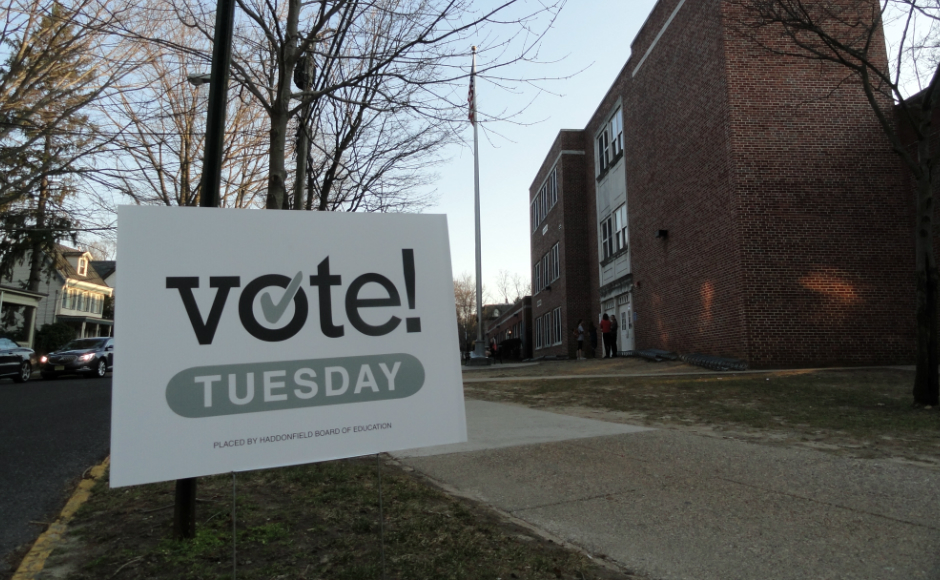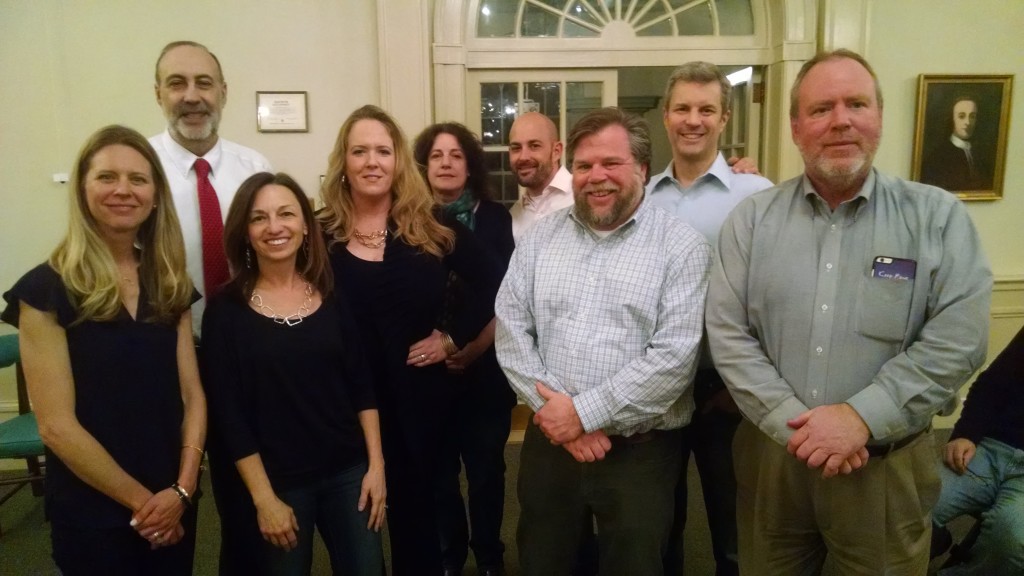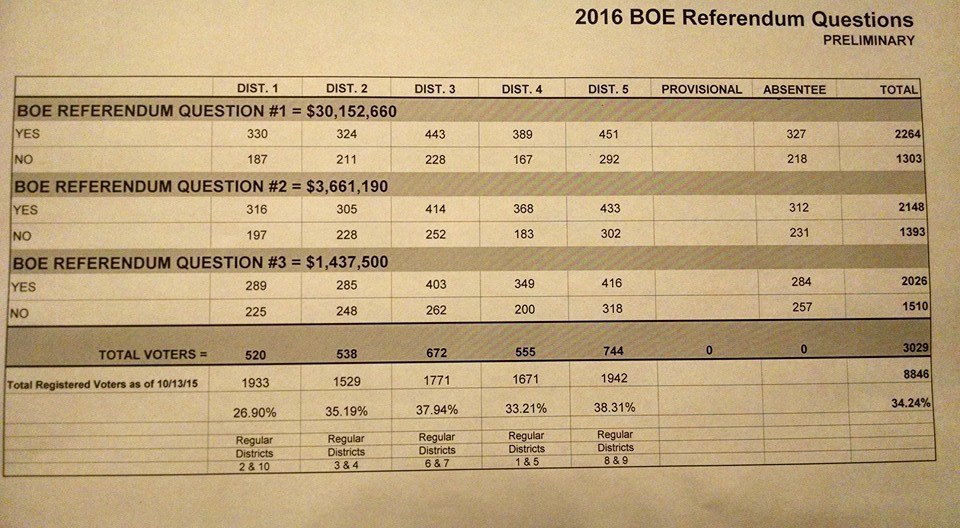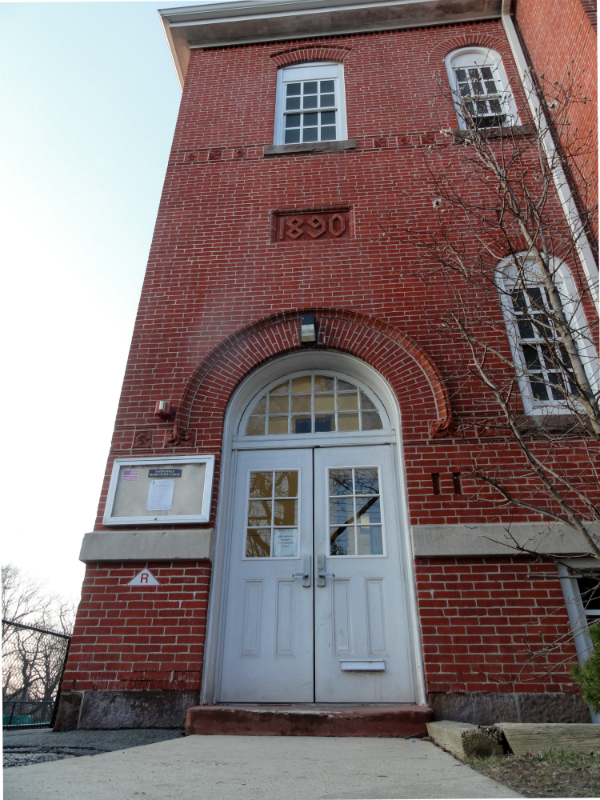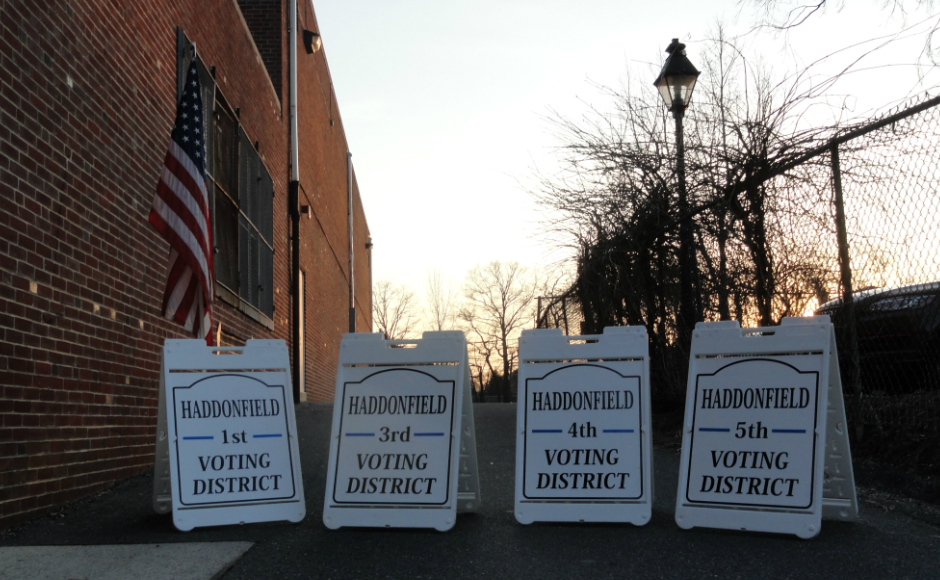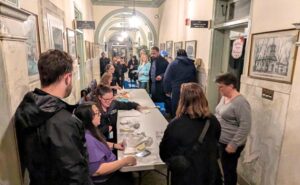More than 34 percent of registered voters turned out, sweeping the slate in favor of all repairs.
By Matt Skoufalos
The Haddonfield Board of Education asked, and taxpayers answered overwhelmingly in the affirmative, voting Tuesday to bond some $35.25 million for repairs to district infrastructure.
The measure will increase taxes about $300 annually for the average Haddonfield household, according to the district, while making necessary improvements to its aging facilities.
Repairs will address masonry, electrical, and roofing needs at Haddonfield elementary, middle, and high schools; update the high school track and football stadium; and add air conditioning throughout the district.
Question 1, which dealt with “critical needs” repairs, passed 2,264 to 1,303; Question 2A, which dealt with air conditioning, passed 2,148 to 1,393; Question 2B, which dealt with the track and stadium repairs, passed 2,026 to 1,510. More than 3,000 Haddonfield residents turned out at the polls, or 34 percent of all registered voters.
Having faced significant public challenges from organized residents in the lead-up to the vote, Haddonfield Superintendent Richard Perry said the local response was unexpectedly strong in favor of the repairs.
“We were very surprised,” Perry said. “We thought it was going to be a tough fight. We didn’t know where it was going to end up.
“We’re just amazed at the amount of support we have throughout the community,” he said. “We’re very pleased with the results. Now the hard work begins.”
With the approvals in hand, architectural specifications will be drafted next, Perry said, and then the district will develop timelines for a project that’s expected to take more than two-and-a-half years to complete.
Major construction won’t begin until the summer of 2017, but Haddonfield Board of Education President Glen Moramarco said the district “may try to move more quickly” on the high school science room and track projects.
Once the repairs are undertaken, Moramarco said the district won’t anticipate needing to go out for additional bonding for at least the next five years.
“I think time will tell how it all plays out,” he said. “It may be prudent to tackle problems as they’re smaller rather than waiting for them to get too large. We’ll allow the experts to make those judgments.”
Acknowledging the opposition the board and superintendent received for their handling of the referendum process, both Moramarco and Perry deferred to their critics after the results were read Tuesday night.
“I would say the criticism on transparency has been difficult because we feel we have been open to the public and taken the advice from local experts that was given,” Moramarco said.
“We didn’t always agree, but we always listened,” he said. “The public input we received has made this bond better. We’re very grateful to the community for their support, and we will endeavor to live up to the trust that has been placed in us.”
“We’d like to thank those who opposed the bond referendum,” Perry said. “With their vocal efforts, we actually made it a better proposal through all the public meetings we held. We’re hoping to work with that group and all the public groups to make sure the project is cost-effective in meeting our long-term needs.”
Exit polls
Earlier in the day, reactions were mixed among borough residents who filed into Haddonfield Central School to cast their ballots.
A 15-year resident who asked to not be identified said that she had voted against the bond because she was dissatisfied with the size of the tax increase it would bring.
“I don’t think we should be hit with something this big,” the woman said, despite acknowledging that the work is “stuff that does have to be done.”
Another voter, who identified himself only as Michael, said the bond measure was too large for his tastes, and criticized the process leading up to the vote, as well.
“I think it’s been a fiasco. I voted no on everything,” he said. “If they get something realistic, I’ll vote yes in September.”
Jay Stack, another 15-year resident, also said the district hadn’t impressed him with its efforts in advance of the vote.
“I voted no for all three [questions],” Stack said. “There’s not any real transparency and no real accountability.”
Glenn and Denise Williams, whose children will all have graduated high school after this school year ends, said their yes votes were investments in their property values. Both view the high-profile Haddonfield public school district as a local amenity worth paying for, and said it’s part of the attraction for people who buy homes in the borough.
“If you live in Haddonfield, you’re paying a premium to live here,” Glenn Williams said. “Then you’re going to say, ‘I don’t want to pay the taxes’? What would the cost of a private education be?”
Tom Dodson said he voted in favor of the bond because he wants the district to take advantage of currently low interest rates.
“There would be few projects where you could say waiting costs less,” Dodson said. “I’m hoping this will go through.”
Drew Siok hoped the bond would pass as a demonstration that education is a local priority in Haddonfield.
“This is such a great town for our children,” Siok said. “We need to stand behind [the schools] and mean it.”

